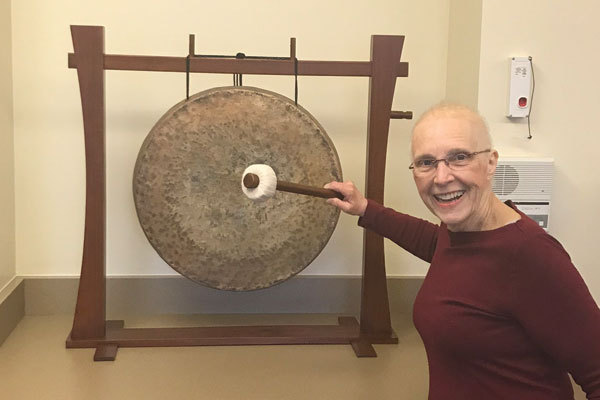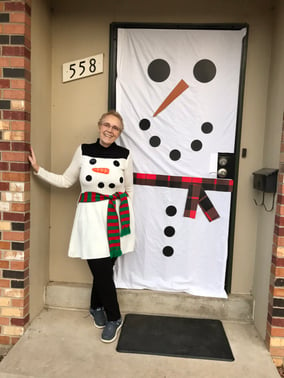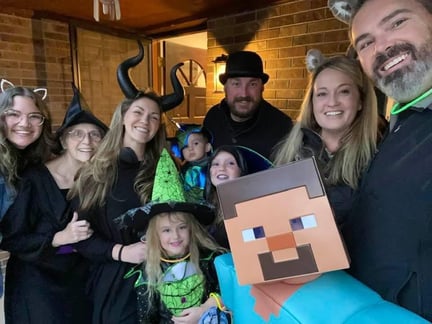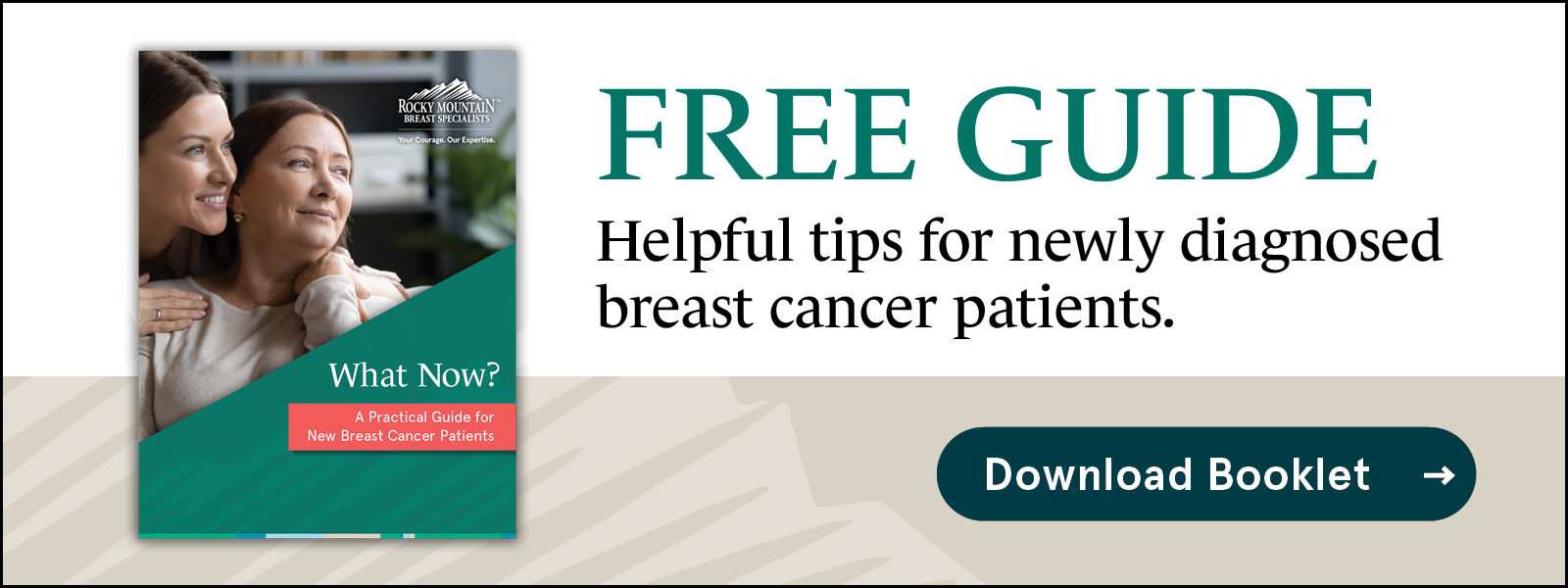Breast Cancer Survivor Says Get Your Mammogram
6 min read

In 2017, Lakewood, Colorado resident Lois Brady wasn’t feeling very well, so she scheduled an appointment with her primary care provider. What she thought would be a routine visit marked the start of her breast cancer journey.
“As we talked about my symptoms, my general practitioner mentioned that it had been a long time since I’d had a mammogram,” Lois said. “In fact, he said it had been almost five years, and I needed to get that done.”
Realizing her provider was right, Lois took his advice and scheduled a mammogram.
Mammograms Detect Breast Cancer
 Lois, a sales rep for a school photography company, had her overdue mammogram in December. Immediately afterward, the technician noticed an abnormality in the images. Something looked very suspicious, so further testing was ordered – right there on the spot.
Lois, a sales rep for a school photography company, had her overdue mammogram in December. Immediately afterward, the technician noticed an abnormality in the images. Something looked very suspicious, so further testing was ordered – right there on the spot.
Learn more about breast cancer screening.
Lois had a follow-up breast ultrasound and concern grew. The next step was for Lois to undergo a breast biopsy two days later. A few days after that, the results were in, and Lois got a phone call with good news and bad news.
“The good news was that I had something in my breast that was operable,” she said. “The bad was that there were definitely cancer cells. I had breast cancer.”
More specifically, Lois had breast cancer that fell between stages 3 and 4. When she hung up the phone she called her daughter, who was playing golf. Fortunately, her golfing partner was her father-in-law, world-renowned orthopedic oncologist Dr. Ross Wilkins. Dr. Wilkins recommended Lois head to Rocky Mountain Breast Specialists. He even called all the breast cancer specialists Lois needed to see, including Dr. loana M. Hinshaw, board-certified medical oncologist at RMBS.
By the first week in January, Lois had met with every member of her care team. Dr. Hinshaw took the lead.
Find out who is on your breast cancer care team.
She explained that Lois had a large tumor in her lymph nodes and a small one in her breast tissue. Some of the cancer in the lymph nodes was also on Lois’ ribs, which meant removing the cancer would potentially require removing part of her ribs. To try to avoid rib removal, Dr. Hinshaw suggested taking steps to shrink the tumors.
3-Part Breast Cancer Treatment Plan: Chemotherapy, Radiation Therapy and Surgery
With a plan in place, Dr. Hinshaw and others threw themselves into Lois’ care. The first phase was chemotherapy. After the first treatment, Lois faced unexpected complications.
“The first chemotherapy session was very hard on my body,” Lois said. “I had to go to the hospital because I was bleeding internally, which is unusual.”
However, Lois didn’t go through her hospitalization alone. Dr. Hinshaw visited her in her hospital room that evening and vowed to determine what caused the problem and promised to get it under control.
Soon after, Lois’ care team discovered that she had ulcers. The chemotherapy had aggravated them and caused the ulcers to bleed. The doctors made a few adjustments to stop the symptoms so breast cancer treatment could resume.
Every three weeks, Lois reported to RMCC for another round of chemo which totaled six treatments over an 18-week period.
Following chemotherapy, Lois entered phase two of her treatment – three weeks of daily radiation therapy. Fortunately, the treatment did its job, shrinking the tumors so Lois could undergo breast cancer surgery.
Learn more about the differences between a lumpectomy and mastectomy.
Addressing Breast Cancer Side Effects
Except for her initial scare and eventual hair loss, Lois said she “never really got sick from chemotherapy or radiation” because her care team worked hard to prevent nausea and other typical symptoms of those treatments. However, Lois did experience a very unexpected side effect of her cancer treatment: frightening dreams.
 “I had nightmares about family members dying,” she said. “It was the strangest thing to feel so vulnerable, but I wasn’t worried about me. I’ve lived life. If something happened to me, I knew I would be OK. I was worried about how my death would affect my family.”
“I had nightmares about family members dying,” she said. “It was the strangest thing to feel so vulnerable, but I wasn’t worried about me. I’ve lived life. If something happened to me, I knew I would be OK. I was worried about how my death would affect my family.”
Lois was particularly fearful for her grandchildren. She worried how their psyche would be affected. The stress of these cancer-related fears were clearly manifesting via vivid nightmares.
Plagued by these recurring dreams, Lois needed a listening ear. After one of her radiation appointments, she stopped in to chat with RMCC’s on-site counselor. She also discussed her fears with Dr. Hinshaw. They both gave Lois an opportunity to share her feelings and talk through her nightmares in a safe environment. The process helped Lois. Soon, she was able to move forward with her treatment and put the nightmares to bed.
Time for Phase 3: Breast Cancer Surgery
With chemo and radiation therapy sessions completed, it was time for surgery. Lois had both breasts and several lymph nodes removed. After healing from her double mastectomy, Lois had her first reconstructive surgery.
Nearly a year after her diagnosis, Lois’ cancer care ended with her final reconstructive surgery and some excellent news 18 months later. Dr. Hinshaw told Lois she was cancer-free – no more radiation, chemotherapy, or surgery.
“Because my team worked so hard at making sure I was OK, I was never really afraid I would not beat cancer,” Lois said. “They never said my case was really bad. They always said they can work with this, they can take care of me, and they’ll keep working.”
To celebrate the good news, Lois and her family went on an Alaskan cruise and to this day, she gives all credit to her team, especially, Dr. Hinshaw.
“My mother gave me birth 73 years ago, but Dr. Hinshaw gave me life again,” Lois said. “I get choked up thinking about her. She is an amazing woman who helped me get past cancer and my fears.”
Changing Perspective and Routine
Breast cancer gave Lois a new perspective. Her journey proved the body can heal when it’s in the hands of caring, expert providers. It also taught her that she has great friends – friends who traveled long distances and left family behind to care for Lois during her treatment.
Breast cancer also changed Lois’ daily routine. When radiation and chemotherapy weakened her immune system, she had to avoid high-germ places. That meant she couldn’t visit schools anymore to set up photography sessions. Additionally, she had to give up her daily swimming routine.
To maintain her health, she started walking. She started with laps around her dining room, which was about all she had energy to do. Eventually, she started walking in her neighborhood and still does today. When the weather gets bad, she heads to the mall to get in her one to four miles daily.
Watching Out for Women
Lois knows her future, like everyone else’s, is unknown. However, she’s content to live in the present and trust her care team.
“Is it scary that cancer can still come back? I guess it is,” Lois said. “But Dr. Hinshaw watches me so closely and carefully that I’m comfortable that if something does show up, she’ll take care of it, and I’ll be fine.”
Learn more about a care plan after breast cancer.
As comfortable as she may feel about her own future, Lois worries for others. When friends get diagnosed with cancer, she sends them to RMCC. And everywhere she goes, she does what she can to help other women and encourage them to get screened.
“Whenever I run into a woman at the grocery store or elsewhere, I tell her to please get her mammogram in a timely fashion,” Lois said. “Don’t wait like I did!”

